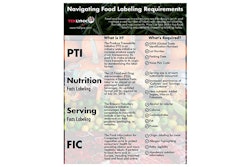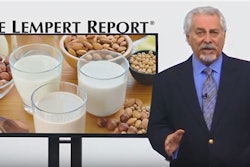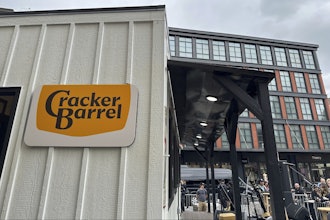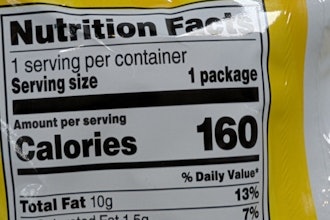The Food Safety and Inspection Service (FSIS) within the U.S. Department of Agriculture inspects and regulates meat, poultry and processed egg products produced in federally inspected plants. The FSIS is responsible for ensuring that these products are safe, wholesome and accurately labeled. All other food products are regulated by the Food and Drug Administration (FDA).
As a food lawyer, one regularly reviews labels to determine whether they comply with the myriad federal regulations applicable to the labeling of food. While prior approval by the FSIS is required for all labels used for meat and poultry products before those products may be marketed in interstate commerce, the FDA does not require prior label approval for food products under its jurisdiction. The FDA has promulgated regulations establishing labeling requirements and monitors labeling compliance primarily through random post-marketing surveillance. The Food, Drug and Cosmetic Act (Act) is the backbone of such regulations, but other regulations include the Food Allergen Labeling and Consumer Protection Act of 2004 (FALCPA) and the Food Safety Modernization Act (FSMA), to name a few. The intent of labeling regulations is primarily health and safety, but secondarily, they also provide meaningful information to consumers that will allow them to make reasoned decisions about the foods that they buy and consume.
Recalls
A recall means the removal or correction of a product that the FDA or the FSIS Recall Management Division considers to be in violation of the applicable laws, and against which, the agency could initiate legal action. The majority of recalls are due to either microbial contamination, adulteration by foreign material or undeclared allergens. The searchable database for FDA recalls, market withdrawals and safety alerts can be found here. Current FSIS recalls can be found here.
Fortunately, legal action — such as seizure or closure of a food facility — is relatively rare. Recalls typically are voluntary. They are sometimes initiated after a company discovers a problem and contacts the FDA or FSIS. Other times, issues are discovered during an FDA or FSIS inspection of a food facility, a report or complaint is made to the FDA or USDA through various reporting systems or, in some rarer cases involving illnesses associated with foods, another regulatory body (e.g., the Centers for Disease Control) contacts food regulators directly.
Recall Classifications
All recalls fall into one of three classes, depending on the threat(s) presented:
Class I: A health hazard situation in which there is a reasonable probability that eating the food will cause serious health problems or death. Examples include food found to contain salmonella or food with undeclared allergens.
Class II: Products that might cause a temporary health problem, or pose only a slight threat of a serious nature. For example, foreign objects that pose a physical hazard or pathogens like Shingella or Cyclospora.
Class III: Products that are unlikely to cause any adverse health reaction, but that violate applicable labeling laws or manufacturing requirements. Examples include a minor container defect and lack of a proper statement of identity on labeling in a retail food.
Labels Present Risk
The FDA requires certain informational elements on food labels: product identity, net contents, nutrition facts, ingredient statements, allergen disclosures and a signature line with the processor’s/distributor’s/importer’s contact information. As noted above, a significant labeling risk is found in allergen disclosures. The USDA has similar requirements, as well as requirements pertaining to an inspection legend, establishment number and safe handling instructions. (Given the breadth of labeling, however, the balance of this article focuses on FDA labeling requirements for illustration purposes.)
Allergen disclosures must be truthful and not misleading, and they are not to be used in lieu of good manufacturing practices. A separate allergen statement must be in accordance with FALCPA, and the statement must declare the common or usual name of all major food allergens intentionally added to the product.
The Act identifies eight major food allergens (milk, egg, fish, crustacean shellfish, tree nuts, wheat, peanuts and soybeans), as well as any food ingredient that contains protein derived from one of these foods, with certain exceptions. A food is misbranded if it is not a raw agricultural commodity and it is, or it contains, an ingredient that bears or contains a major food allergen, unless either:
1. The word “Contains,” followed by the name of the food source from which the major food allergen is derived, is printed immediately after or is adjacent to the list of ingredients; or
2. The common or usual name of the major food allergen in the list of ingredients is followed in parentheses by the name of the food source from which the allergen is derived, when the name of the food source of the major allergen does not appear elsewhere in the ingredient statement (ex. “whey (milk)”).
Failure to disclose allergens results in a significant number of recalls each year. For instance, in November 2016, H.J. Heinz Co. recalled approximately 5,000 pounds of bistro au jus gravy from more than 1,000 retail locations because it incorrectly labeled the product as pork gravy. The result was that the labels, which applied to another product, did not disclose the presence of milk and soy in the au jus gravy. The company immediately took action after the mishap was brought to its attention by a customer, but the cost of this labeling inaccuracy was substantial.
More recently, Gerber was required to issue an allergy alert and a voluntary recall of its Cheese Ravioli Pasta Pick-Ups. While egg was listed as an ingredient, the “Contains” statement did not list egg as an allergen. Interestingly, the problem existed because Gerber voluntarily added a separate allergen statement that omitted egg. Had Gerber not had a separate allergen statement, there would have been no issue because an alternative method of compliance with allergen labeling is to be sure that the particular allergen is specified in the ingredient statement. Yet, as this product is intended for toddlers, Gerber voluntarily recalled its product as “a precautionary measure to protect little ones with egg allergies . . . until [the] labels are updated.” See www.gerber.com/recall-march-2017.
Labeling-related recalls, however, are just one concern. Improper labels can also result in market withdrawals and/or liability. For instance, the FDA has issued guidance, not once, but twice (2009 and 2016), indicating that it believed that “evaporated cane juice” is a misleading description of sugar. While FDA guidance does not have the force of law or regulation, it is entitled to great deference, and it often forms the framework for class-action attorneys to find technical violations of the Act and similar food and/or consumer protection statutes. Nonetheless, some companies continued to use this phrase in their ingredient statements, and they found themselves engaged in costly litigation, which usually results in a voluntary market withdrawal of product, monetary settlements and/or agreements to modify product labels.
What Can Be Done?
While correcting a problem after it arises is the right thing to do, food businesses should minimize labeling risks as much as possible. Prudent steps that can be taken include:
• Being hyper-vigilant. Don’t assume that labels are correct simply because others in the marketplace look similar. FDA regulations are sometimes confusing, and FDA guidance documentation does not always answer every question. When in doubt, ask a labeling professional.
• Documenting your operations — manufacturing processes, ingredients, supplier verifications, allergen protocols, HACCP and more. It is often the small details that trip companies up.
• Carefully inspecting food labels for accuracy. Working with food industry consultants and knowledgeable legal counsel is a must. A second set of eyes — on labels and the regulations — is never a bad investment.
• Learning from “near misses” as well as actual situations. Those who do not learn from history are doomed to repeat it.
William C. Acevedo is a partner in the Food and Beverage Practice at Oakland, California law firm Wendel, Rosen, Black & Dean LLP. He can be reached at (510) 834-6600 or [email protected].























